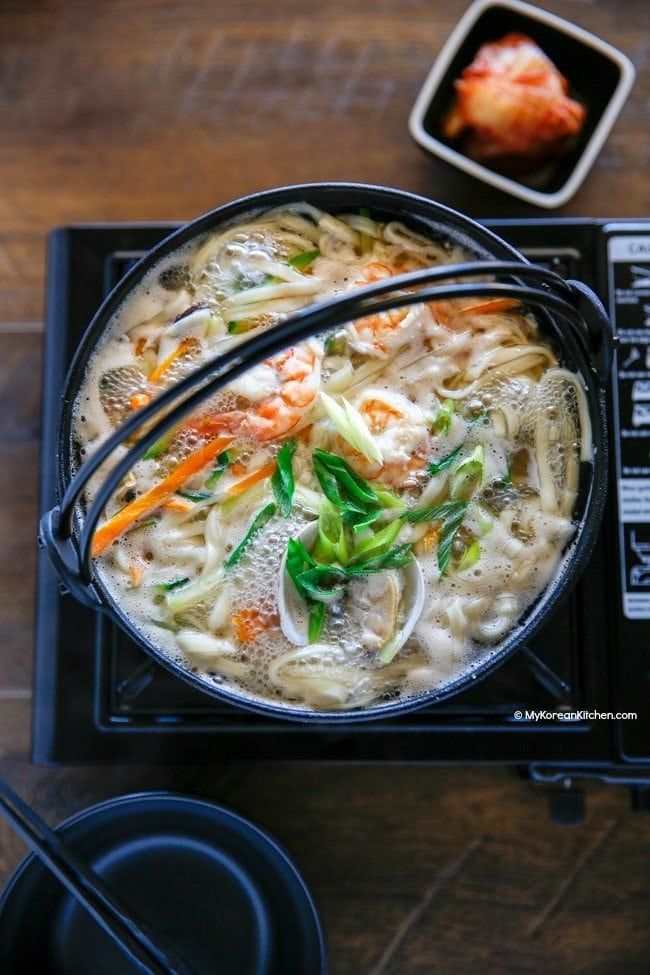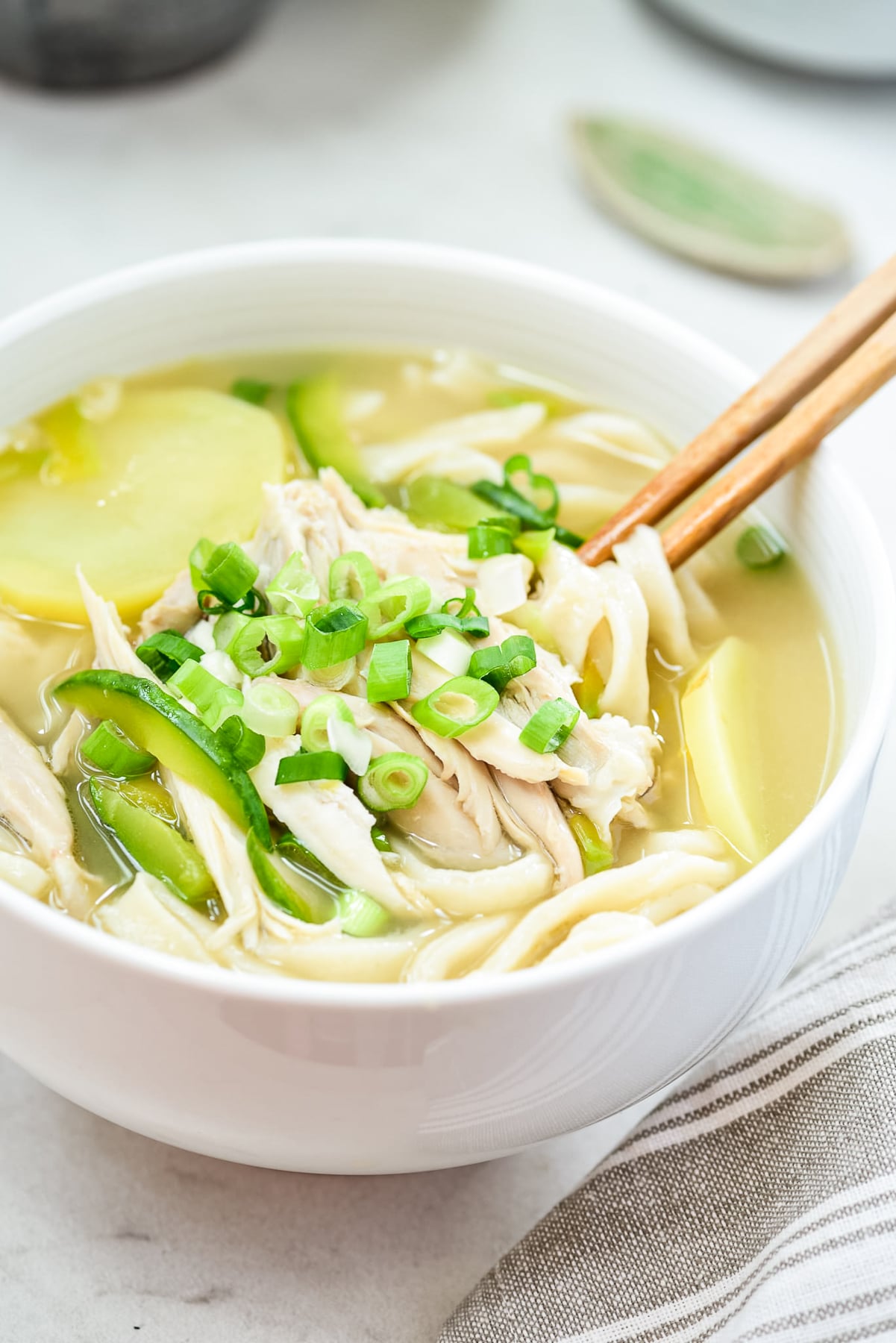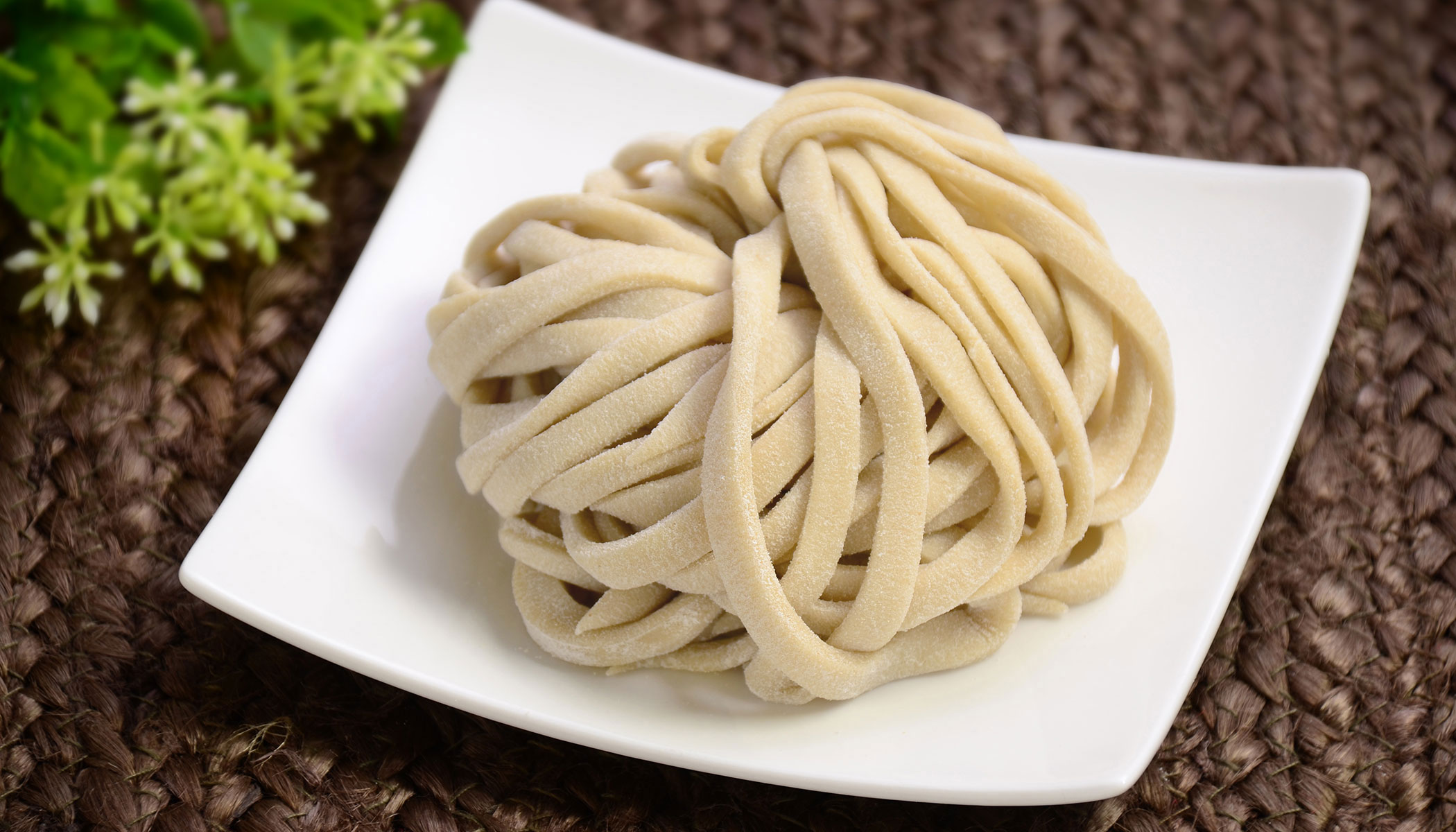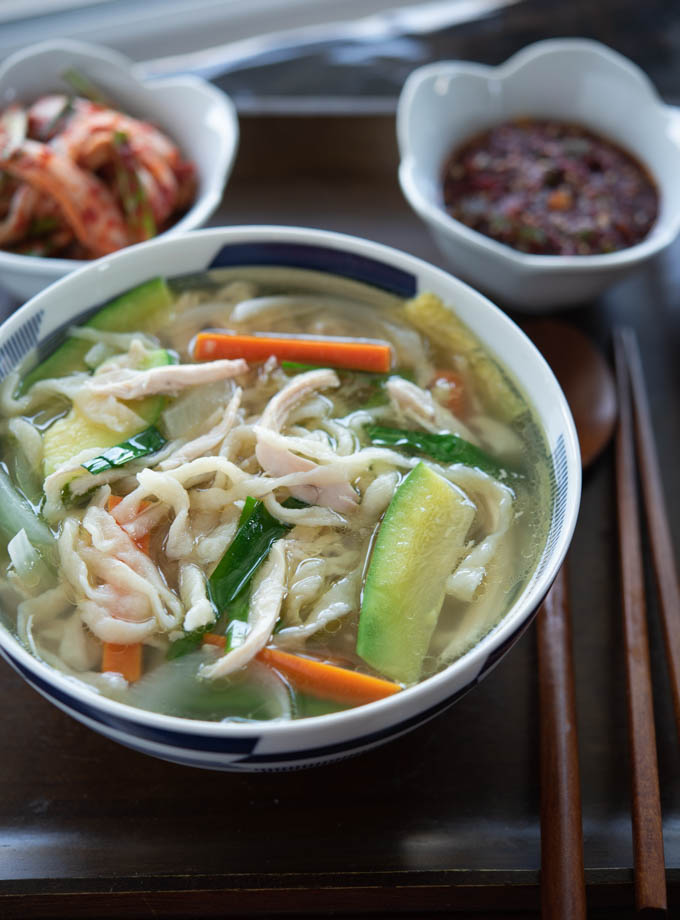Kalguksu
kal-guksu, kalgugsu, 칼국수
Kal-guksu is a Korean noodle dish consisting of handmade, knife-cut wheat flour noodles served in a large bowl with broth and other ingredients. It is traditionally considered a seasonal food, consumed most often in summer. Its name comes from the fact that the noodles are not extruded, pulled, or spun, but cut. The record of noodles can be found in documents of the Goryeo era, but the descriptions are vague and the nature of the noodles isn't clear. In the 12th century document Goryeo dogyeong (고려도경; 高麗圖經) it is mentioned that noodles were only eaten on special occasions, as wheat flour was very expensive, being imported from China. A cooking description can be found in a later document, The Best New Cooking Methods of Joseon (조선무쌍신식요리제법; 朝鮮無雙新式料理製法), written in 1924. In the 1934 book Simple Joseon Cooking, the recipe calls for the noodles to be boiled and rinsed in cold water before adding broth and garnish, a method that differs from the modern version of boiling the noodles together with the broth.
Source: Wikipedia
Recipes








.jpg)


